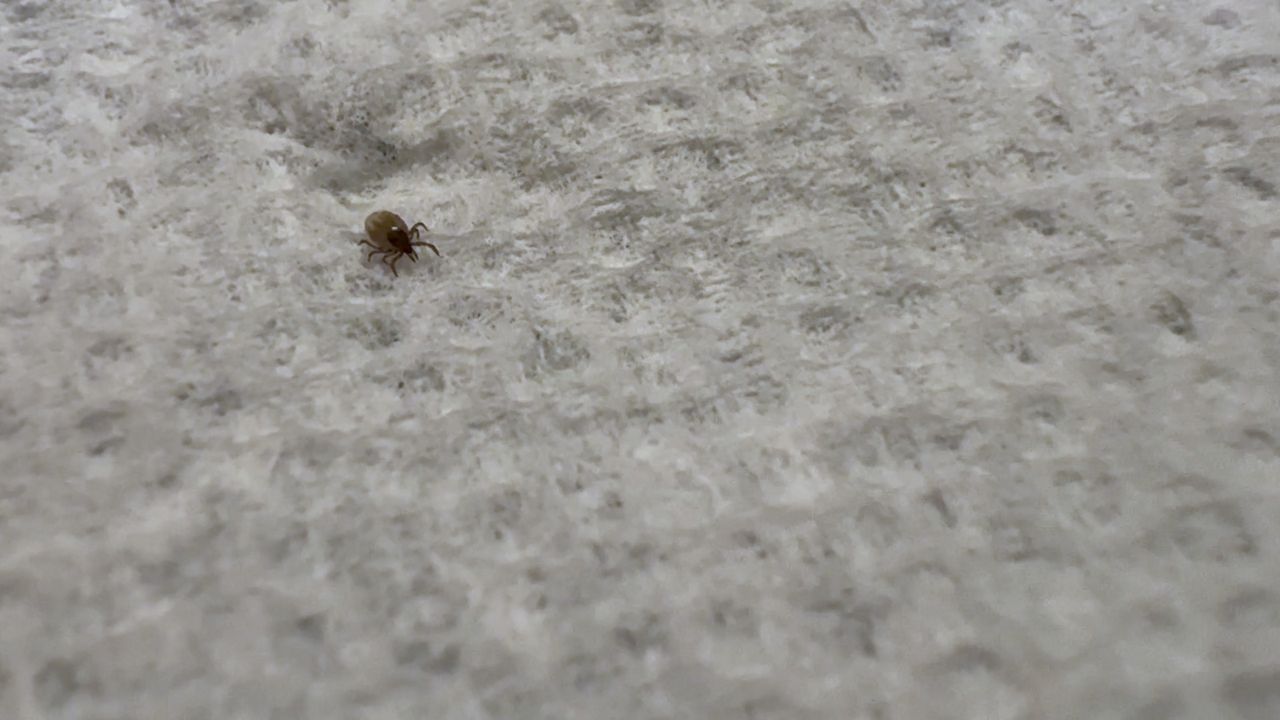Tick season came earlier this year because ticks never really went into full hibernation due to the mild winter, according to experts.
When ticks are active, the chance of getting tick-borne diseases is more likely.
Royale Scuderi, executive director of the Central New York Lyme and Tick-Borne Disease Alliance, has Lyme disease. She said she has been using her dog Charlie as her support to get through recent flare ups.
“Charlie's my support companion. You know, he lays by me, he nudges me, he knows when I'm not feeling well. He also encourages me to get out of bed and take him out for a walk because he needs to be cared for," Scuderi said.
Scuderi says she was sick for months and doctors did not know what was wrong. She first got sick in the summer of 2010, but it wasn’t until March of 2011, when she was diagnosed with Lyme disease.
“I was tired all the time and I just didn't feel that well. And then I started getting headaches and nausea and I thought, 'what is this?" Scuderi said.
Over a decade later, she says she is still dealing with symptoms.
"Thirteen years later. I have chronic pain, joint pain. I still have fatigue," she said.
Harry Nugent, natural resource educator at the Cornell Cooperative Extension, said ticks are already out and about.
“Especially with the mild winter. They didn't really go down and hibernate like they normally do. They were pretty ready whenever it warmed up to be out feeding," he said.
He said there are actions people can take to prevent tick bites.
"The best things you can do are wear light-colored clothes, long sleeves, long pants and to tuck them, the pants, into your shirt and your pants into your socks," Nugent said.
While people are outside, he recommends they stick to the beaten path
"Ticks that are able to get a little bit up higher and they just sit right out at the end of leaves, and then all it takes is the simple brush right by for them to be able to hook on," he said.
Once inside, he said he recommends that people check themselves for ticks, and if they find one, to remove them appropriately.
"You are going to get as close to the skin as possible, right at the head of the tick, squeeze, and pull and remove," he said.
Pets can also be tick magnets, so it's important to inspect them too, just like Scuderi does for Charlie.
"I was checking him over, which is what I normally do when I am looking for tics. He has light-colored skin or light colored hair, so that is helpful," Scuderi said.
Scuderi is living with Lyme disease every day, but lucky for her, Charlie is always by her side.
"He has been so helpful to me as part of my support system. He is here to greet you when you get up," she said. "Pets are an amazing source of support."




%20Cropped?wid=320&hei=180&$wide-bg$)



